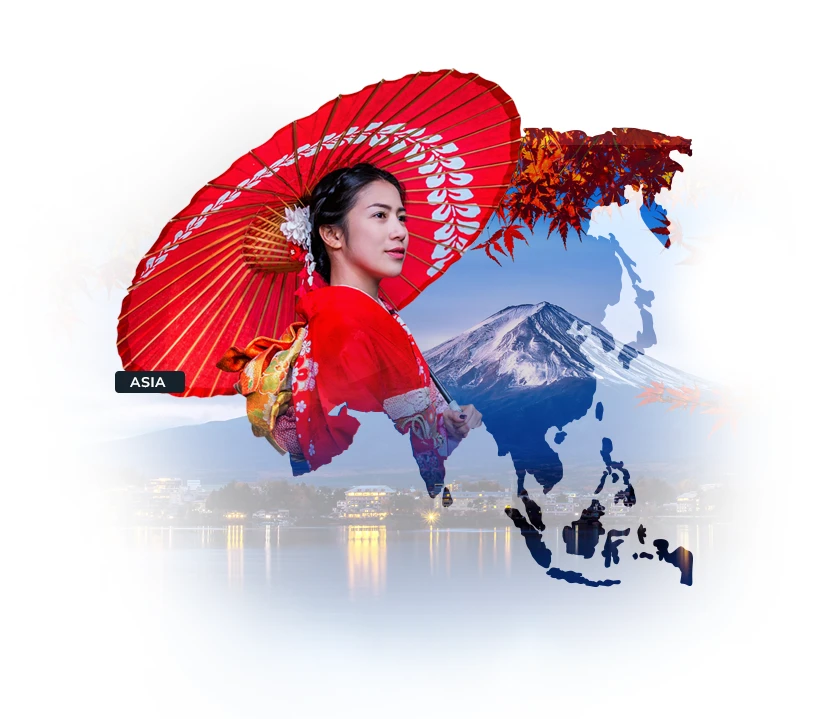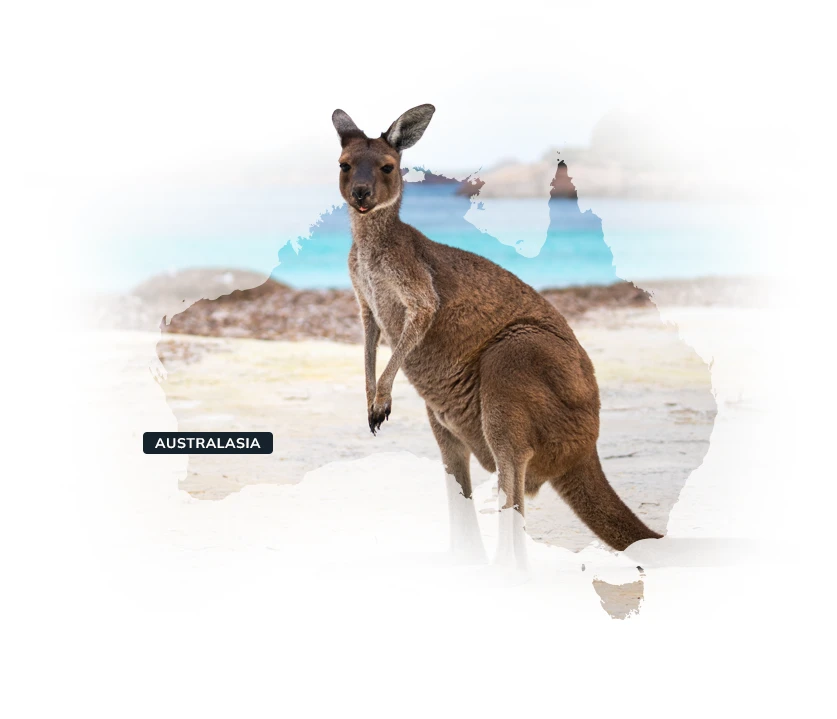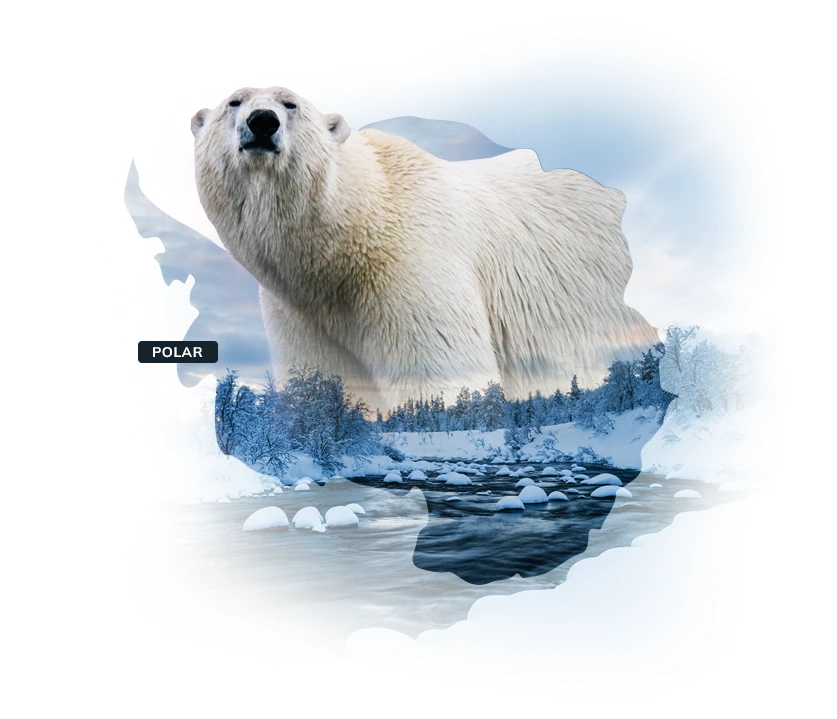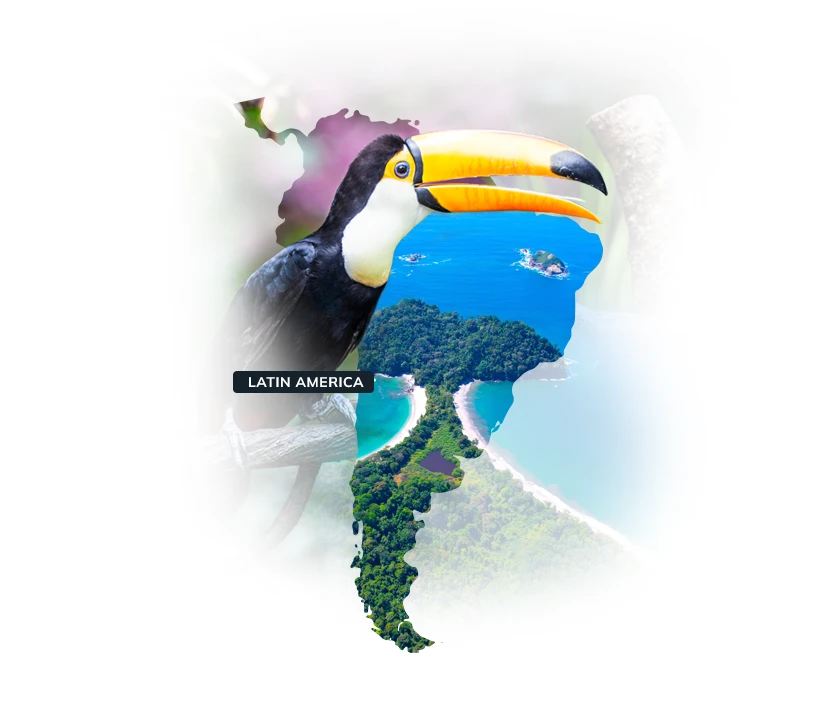Great Antarctic Expedition
Tailor made from £14400 per person
21 days
Falkland Islands, South Georgia, South Shetland Islands, Antarctic Peninsula
Tailor made from £14400 per person
 21 days
21 days
 Falkland Islands, South Georgia, South Shetland Islands, Antarctic Peninsula
Falkland Islands, South Georgia, South Shetland Islands, Antarctic Peninsula
Enquire Online
Trip Itinerary
Please select any day below to view that destination
- Day 1 - Arrival in Ushuaia
- Day 2 - Sailing the Beagle Channel
- Day 3 - Sailing the Beagle Channel
- Day 4 - Exploring the Falkland Islands (Islas Malvinas)
- Day 5 - Exploring the Falkland Islands (Islas Malvinas)
- Day 6 - Sailing the Southern Ocean
- Days 7 - Sailing the Southern Ocean
- Day 8 - Exploring South Georgia
- Day 9 - Exploring South Georgia
- Day 10 - Exploring South Georgia
- Day 11 - Exploring South Georgia
- Day 12 - Sailing the Scotia Sea
- Day 13 - Sailing the Scotia Sea
- Day 14 - Exploring the Antarctic Peninsula
- Day 15 - Exploring the Antarctic Peninsula
- Day 16 - Exploring the Antarctic Peninsula
- Day 17 - Exploring the Antarctic Peninsula
- Day 18 - Exploring the Antarctic Peninsula
- Day 19 - Sailing the Drake Passage
- Day 20 - Sailing the Drake Passage
- Day 21 - Departure from Ushuaia
Journey to the ends of the Earth and follow in the footsteps of the bold first explorers on this epic Antarctic expedition
Traverse the mighty seas, float in the shadows of glaciers, and encounter thrilling wildlife as you venture where few others have gone before. This Great Antarctic Expedition is truly epic, retracing the path of the historic first explorers to take you to Antarctica’s most treasured places.
You’ll start at ‘the end of the world’ in Ushuaia, the southernmost city in the world. Take a few days to explore the nautical sites and beautiful national parks before embarking on your Antarctic expedition.
As you pull away from the mainland, you’ll cross through the Beagle Channel, en route to your first stop in the Falkland Islands, an incredible wildlife haven. Continue through the Southern Ocean to South Georgia, the site of Shackleton’s final resting place, packed with penguins, sea birds, and seals.
Next, you’ll cruise through the historic Scotia Sea to touch down on the Antarctic Peninsula. You’ll spend six spectacular nights on the Great White Continent, making daily shore excursions to observe the phenomenal wildlife and spellbinding scenery. You’ll end your grand voyage with a cruise through the iconic Drake Passage, before disembarking in Ushuaia.
Sailing aboard a specialist ship built for the gruelling Antarctic seas, you’ll be accompanied by an expert crew of historians, naturalists and marine biologists who are always on hand to answer your questions. With a bar, live entertainment, a fantastic restaurant serving all your meals, and cosy cabins with views of the ocean, you’ll sail in supreme comfort.
See it all on this mighty 21-day expedition as you venture into a polar wilderness reserved for the most intrepid adventurers. After spending three breathtaking weeks immersed in the planet’s most unforgiving frontier, you may never be the same again.
What's Included:
- Arrival & departure transfers
- Cruise ship accommodation (full board) & accommodation in Ushuaia (breakfast provided)
- Professional local staff with fair salaries
- Local English-speaking guides
- Zodiac excursions with the expedition team
- Lectures & educational programmes on board
- Waterproof boots (UK sizes 3.5 to 15)
- Expedition parka
Trip Itinerary
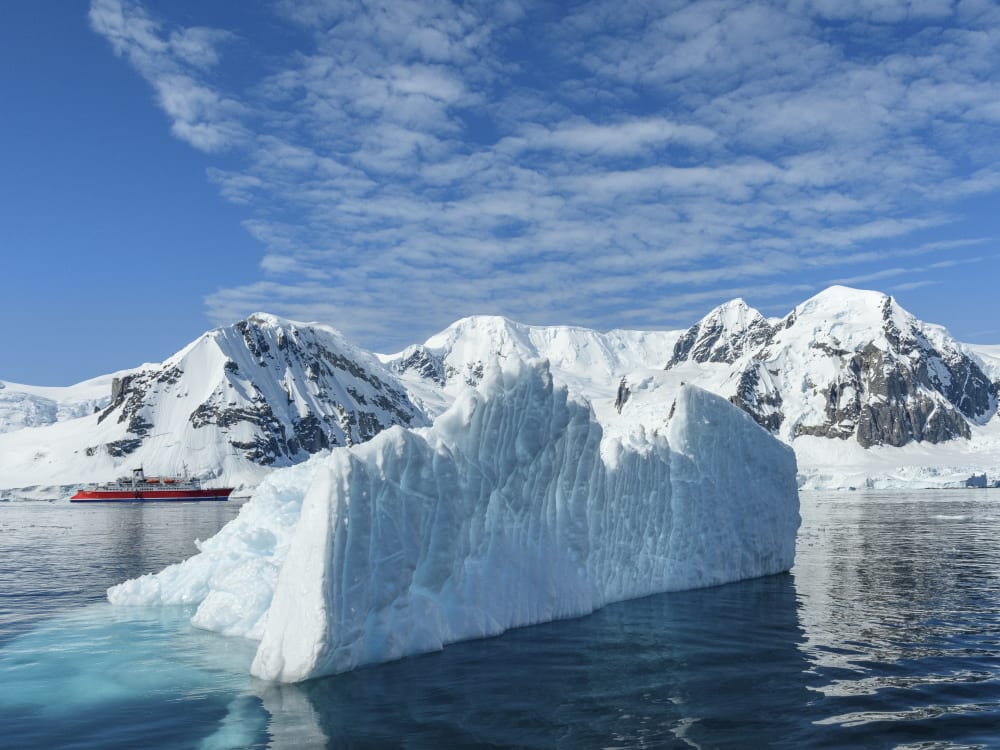
Day 1 - Ushuaia
Day 1 - Arrival in Ushuaia
Today you’ll arrive at the ‘End of the World’. Ushuaia is the southernmost city in the world, located on the Tierra del Fuego archipelago at the bottom of Argentina.
You’ll be met on arrival in Ushuaia by a Wayfairer representative and transferred to your hotel for the evening. The day is yours to explore the breathtaking natural landscapes and wildlife around the city.
Visit Isla Yécapasela (Martillo Island), home to a large colony of friendly Magellanic penguins, or trek to the Esmeralda Lagoon, a dazzling turquoise lagoon set in a peat and bog valley surrounded by snow-capped mountains.
You also have the option to include a trip to the Tierra del Fuego National Park for an additional extra. This natural paradise is filled with rivers, glaciers, dense forests, and an array of native flora and fauna. Your guide will take you to the scenic lookouts in the southern section of the park, passing Valle Rio Pipo on the way to the Austral Fueguino train station. You can even take the End of the World train before heading to Lago Roca and Bahía Lapataia.
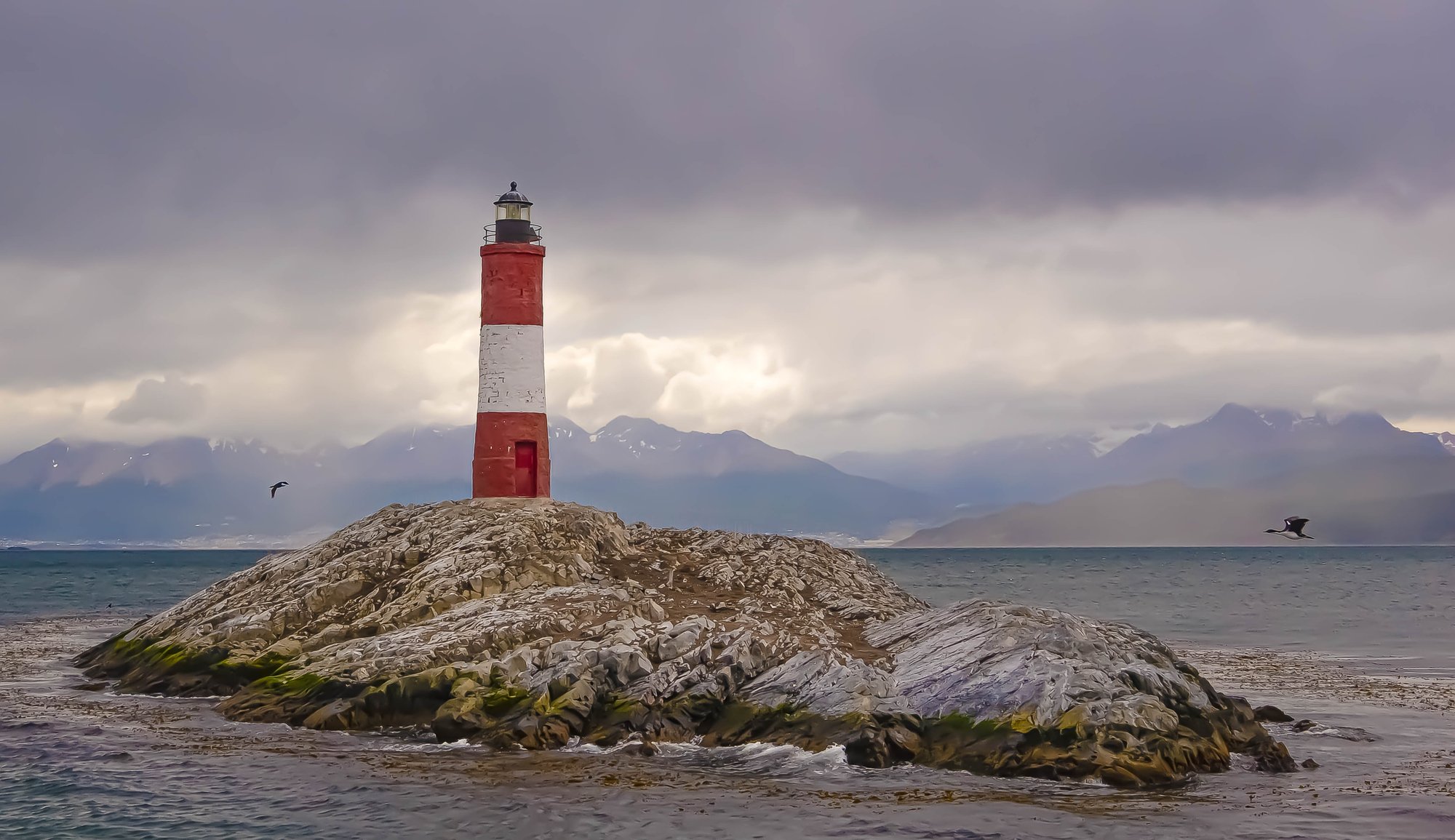 View Accomodation Ideas
View Accomodation Ideas
Days 2-3: Beagle Channel
Day 2 - Sailing the Beagle Channel
The morning is yours to explore Ushuaia. Go shopping for some souvenirs, get out into the surrounding countryside, or roam through the town. Venture out to see the Les Eclaireurs lighthouse perched in the middle of the Beagle Channel. The famous red and white striped structure is known as ‘The Lighthouse at the End of the World’.
You may like to visit the old maritime museum and jail, a 19th-century institution that now holds a lot of fascinating information about the nautical ventures of Tierra del Fuego. Another great museum is the Museum of Tierra del Fuego, full of interesting history about the famous Antarctic explorers, including Charles Darwin, Francis Drakes, and Ferdinand Magellan, who have all been immortalised in the islands and passages around Ushuaia.
This afternoon, you’ll board the G Expedition at the port in Ushuaia, embarking on your voyage to Antarctica. You’ll spend the evening sailing through the Beagle Channel. Head to the observation decks for spectacular views of Ushuaia and the Patagonian landscapes. Keep your eyes peeled for the Isla de los Lobos, where you can spot sea lions and the Isa de Pajaros, where you can spot hundreds of king cormorants.
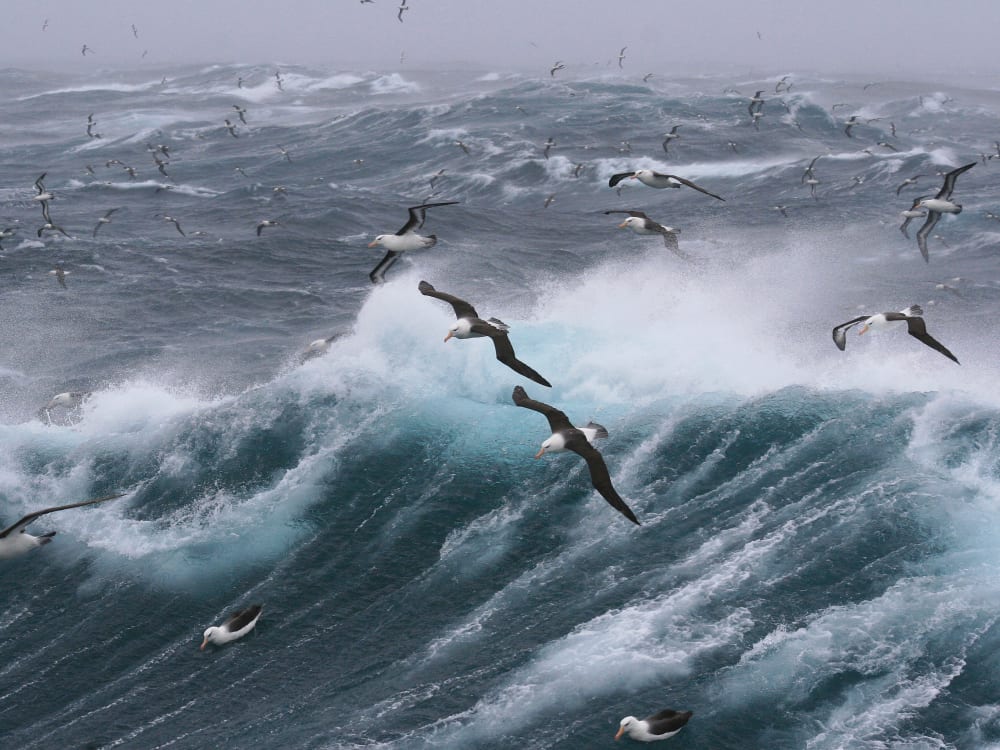
Day 3 - Sailing the Beagle Channel
Today you’ll continue your passage east, sailing through the Beagle Channel towards the Falkland Islands (Islas Malvinas). The day can be spent enjoying lectures and information sessions about the incredible human and natural history of the Antarctic region.
You can also spend some time exploring your ship, the G Expedition. This intimate, small ship encompasses five decks, with space for up to 134 passengers and 69 crew. The ship was completely refurbished in 2009, with large common areas and observation decks to look out over the iconic landscapes of the world’s most isolated region.
Each spacious cabin has an ocean-facing window or porthole and private en-suite facilities, and you’ll relish the space and comfort of the ship. The crew of the G Expedition are passionate experts in Antarctic cruising, and they are dedicated to the safe and environmentally responsible operation of the ship.
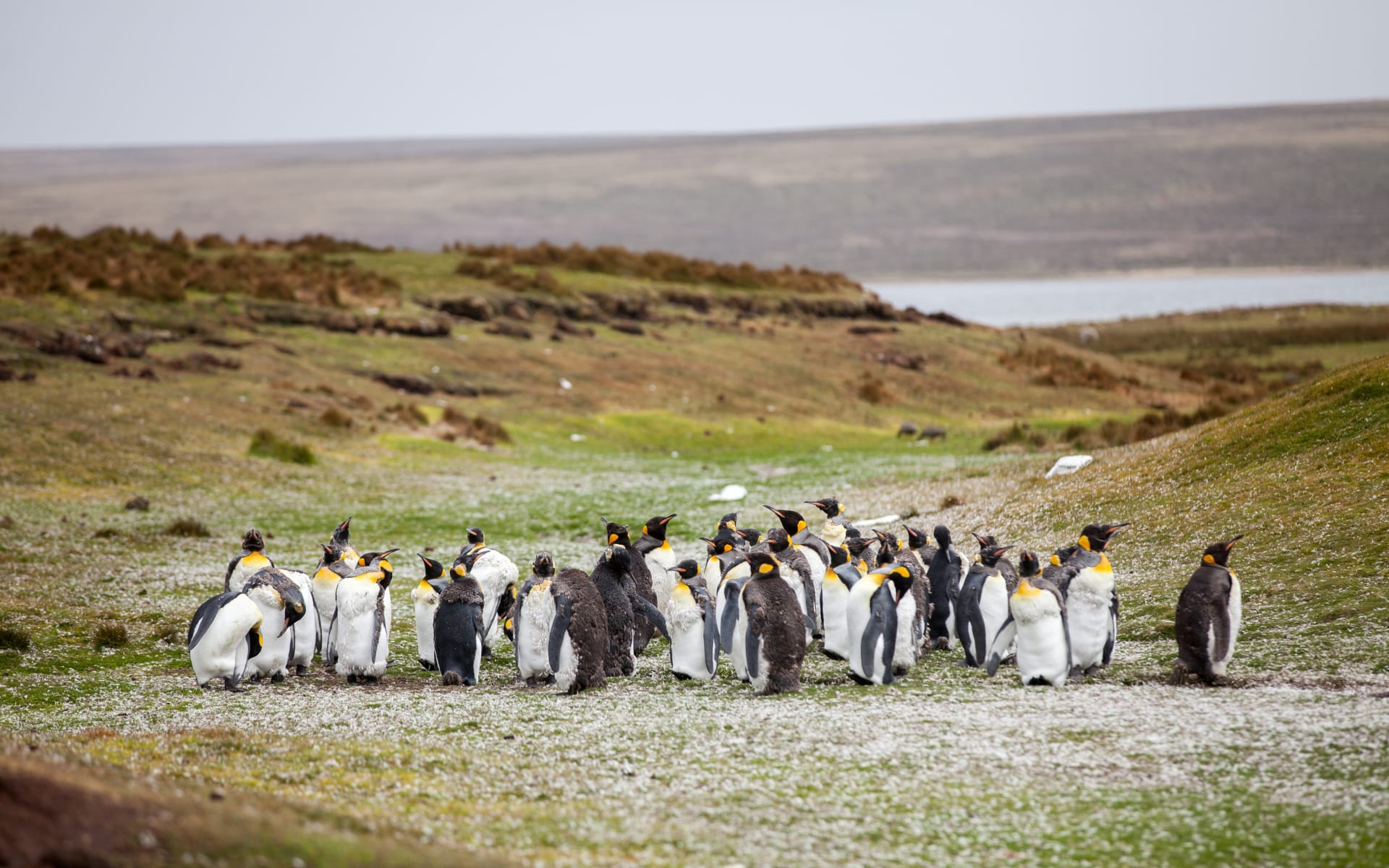
Days 4-5: Falkland Islands (Islas Malvinas)
Day 4 - Exploring the Falkland Islands (Islas Malvinas)
Touch down in the Falkland Islands (known as the Islas Malvinas in Argentina), an isolated region of extraordinary wilderness. The Falklands are a remote archipelago of more than 700 islands, covering an area of 12,173 square kilometres. You’ll encounter few humans here as you roam the desolate, roadless landscapes. Instead, you’ll find yourself immersed in an abundance of wildlife and striking scenery. The Falklands are renowned for their bird life, boasting five species of penguin, including a colony of around 400 king penguins and the largest black-browed albatross colony in the world. Other species include petrels, geese, hawks, falcons, and ducks, including the Falkland Flightless Steamer duck (Logger Duck), and the Striated Caracara (Johnny Rook), a rare bird of prey found only on the Falkland Islands and off Cape Horn.
You’ll also have the opportunity to observe seals and sea lions, including a massive colony of around 1,800 elephant seals. Gaze out over the ocean for the chance to spot orcas, killer whales, porpoises and dolphins. Venture to Carcass Island and Saunders Island for some of the best wildlife viewing.
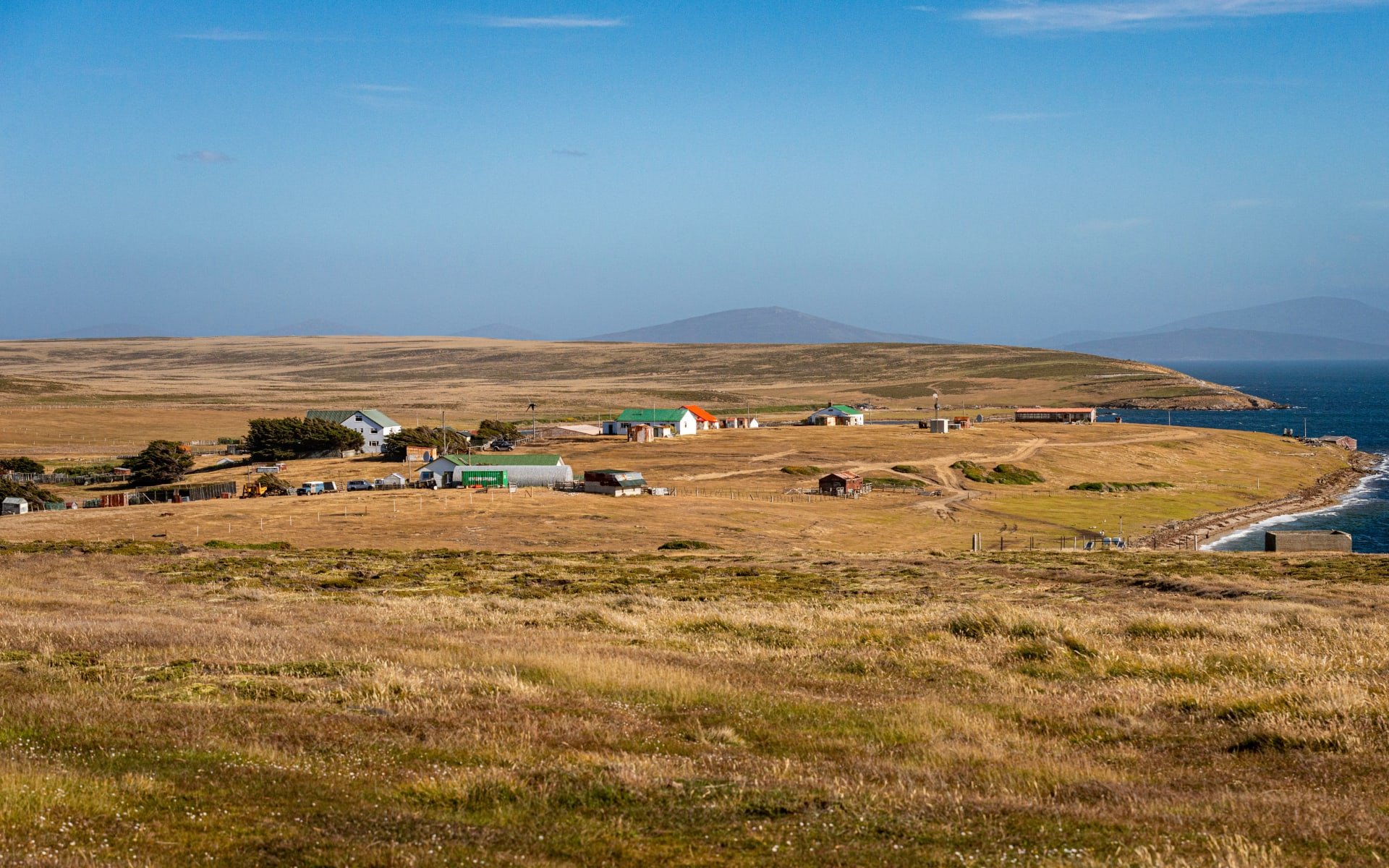
Day 5 - Exploring the Falkland Islands (Islas Malvinas)
Enjoy another day exploring the desolate beauty of the Falklands. We recommend a trip to Stanley, the quaint capital of the Falkland Islands. This charming town is home to more than 80% of the Falklander population, with 2000 residents gathered by Stanley Harbour.
You’ll find just a few streets filled with colourful houses, red phone boxes and cheerful pubs, offering a gregarious contrast to the long, dark winters. Stroll along the 1982 Memorial Walk along the harbour, where you’ll see the rusting hulks of ships that met their end at the perilous Cape Horn.
You can visit the southernmost cathedral in the world, see the Whale Bone Arch, constructed from the jawbones of two blue whales in 1933, wander through the Stanley Museum, and explore Cartmell Cottage, one of the first residential buildings constructed in 1849.
Head to the East Falkland area of Darwin & Goose Green to learn about the region’s tumultuous history. You’ll see the Goose Green battle site of the 1982 Falklands War, the British and Argentine cemeteries, and the War Museum.

Days 6-7: Southern Ocean
Day 6 - Sailing the Southern Ocean
Today you’ll continue your Antarctic voyage, sailing east through the Southern Ocean on course to South Georgia. Get involved in the many lectures and educational programs happening on board the ship, as these will prepare you for your landings. The G Expedition has one of the highest ratios of expedition team members, with one expert for every ten guests. The team consists of highly skilled historians, naturalists and marine biologists, and there is always someone to answer your questions.
Revel in the luxurious features of the G Expedition, including the Polar Bear Pub, the heated Mud Room, the Lonely Planet library, the spacious Discovery Lounge and the Albatross Dining Room, offering international fine dining. There’s also a gym, a sauna, a medical clinic, a gift shop, and a computer room with a satellite-linked internet system gift shop.
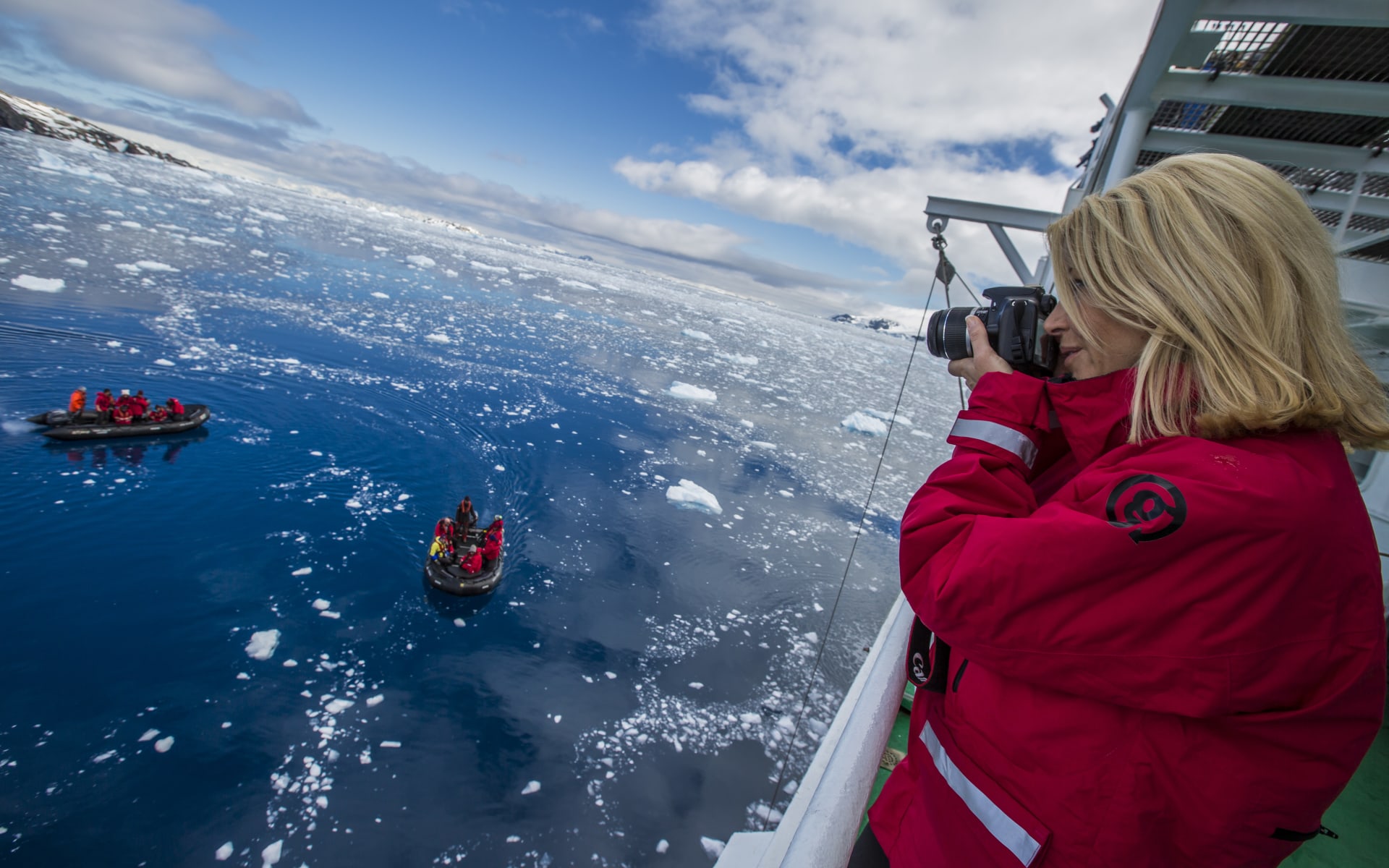
Days 7 - Sailing the Southern Ocean
The G Expedition boasts a range of observation decks where you can keep your eyes peeled for the many whales that inhabit the waters of the Southern Ocean. Head to the 360° Top Observation Deck, the large aft deck with barbeque facilities for alfresco dining, or the Raised Forward Observation Deck, for panoramic views of the region.
You’ll also be spending a lot of time in the Albatross Dining Room. Here, you’ll enjoy a daily buffet-style breakfast and lunch, along with a delectable 4-course dinner. The room offers port, starboard and forward-facing views so you can soak up the sites as you tuck into your meal. The menus often feature locally-sourced ingredients, and the ship always aims to feature regional foods where possible. There are also plenty of vegetarian options available.
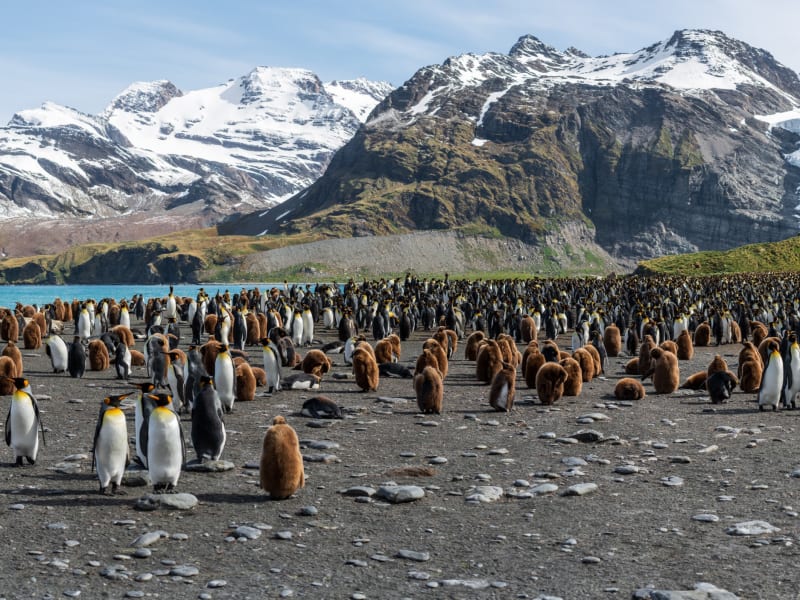
Days 8-11: South Georgia
Day 8 - Exploring South Georgia
Today is the first of four action-packed days spent exploring South Georgia, a sub-Antarctic island and one of the first gateways to Antarctica. Known as ‘the Alps in the mid-ocean,' South Georgia is a land of extreme beauty. The island stretches for 3,755 square kilometres, and 57% is covered in dazzling glaciers, the largest being Fortuna Glacier.
The Allardyce Range carves a path through the middle of South Georgia, marked with craggy, glaciated mountains. The highest peak is Mount Paget at 2,934 metres, while the island is 40 kilometres wide at its broadest and 170 kilometres at its longest. South Georgia is renowned for its harsh, unpredictable climate with fierce winds and regular snowy rains, so all expeditions to the island are conditional on the weather.
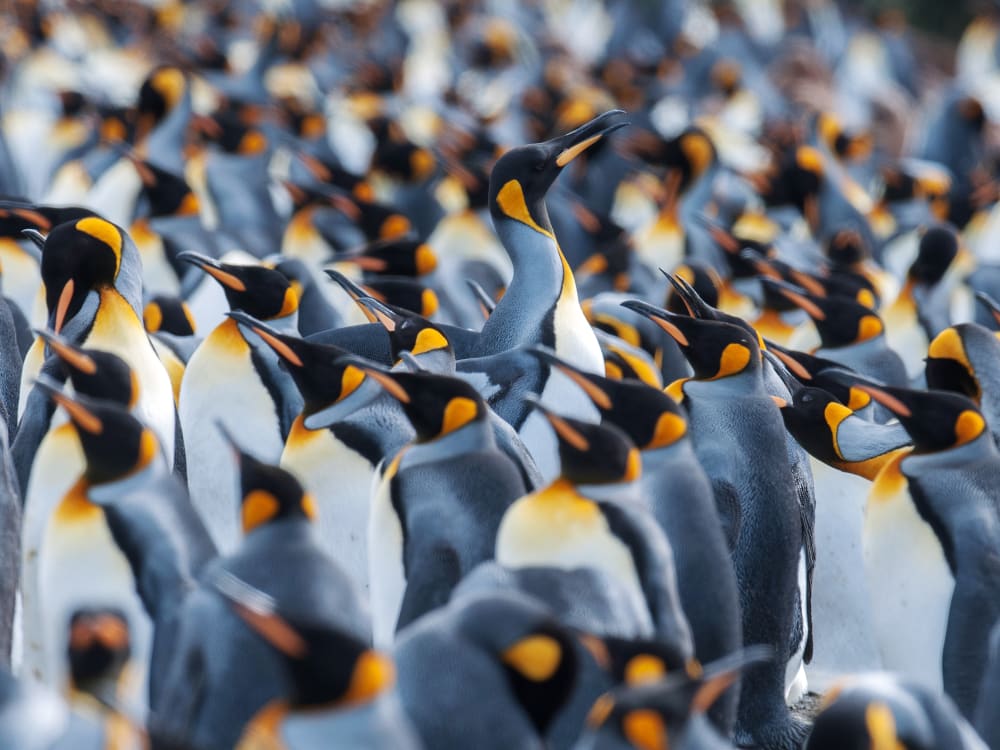
Day 9 - Exploring South Georgia
South Georgia is a natural paradise renowned for its phenomenal wildlife populations. You’ll have the chance to observe thousands of penguins across six species, albatross including the wandering albatross, and an abundance of other seabirds, such as petrels and prions. You can observe a large colony of King penguins, the second largest species of penguin that stands almost 100cm tall.
The island also accounts for 95% of the world’s southern fur seal population, with 2 million seals descending on the island each summer. You may even be lucky and spot South Georgia’s two native species - the South Georgia pintail, the only carnivorous duck in the world, and the South Georgia pipit, the only songbird in Antarctica.
One of the top spots is St. Andrew’s Bay, believed to hold more density of wildlife than any other place in the world. With an enormous king penguin colony and seal rookery, the bay is packed with hundreds of thousands of king penguins, elephant seals and fur seals in an astounding parade of nature.
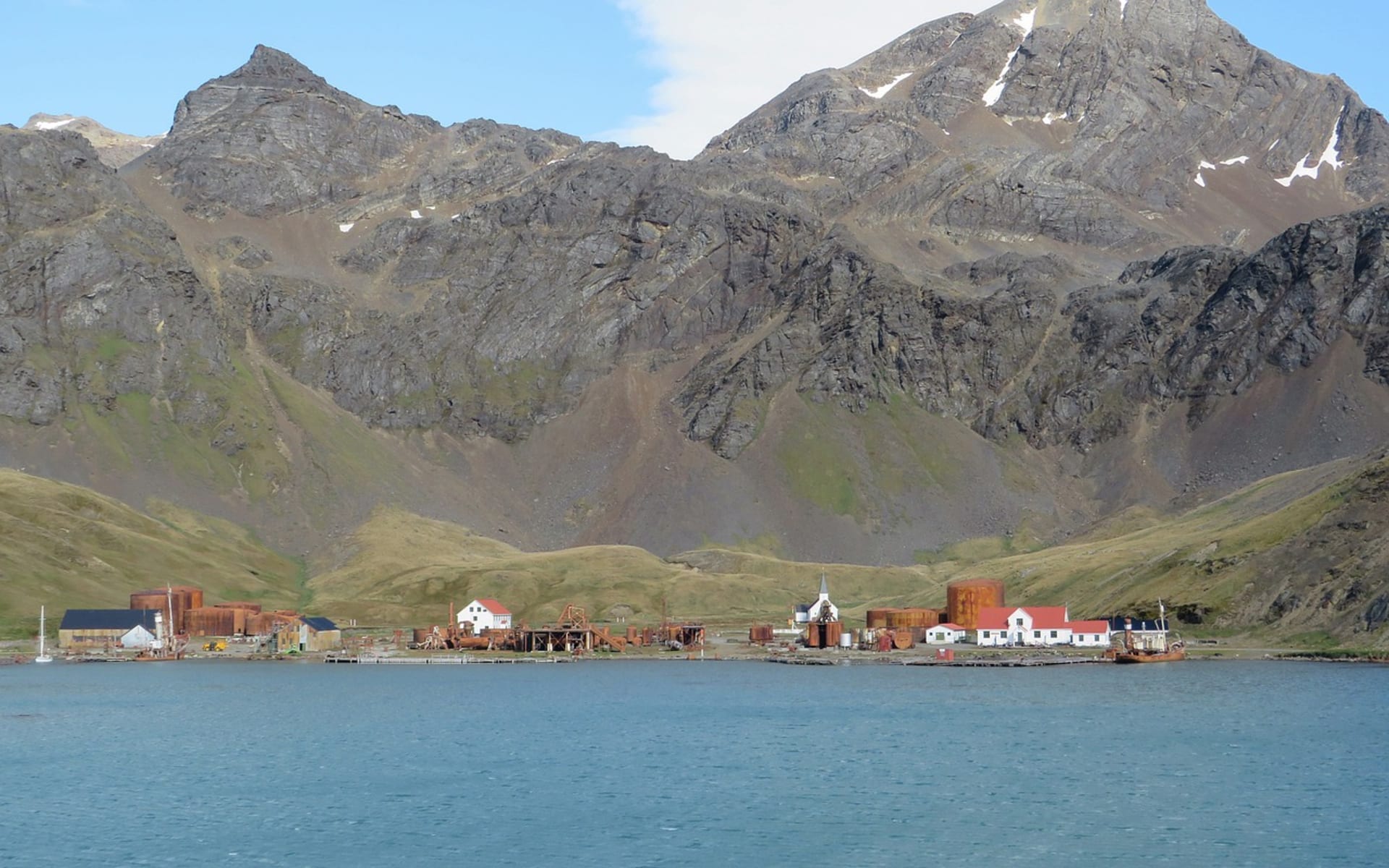
Day 10 - Exploring South Georgia
Immerse yourself in this wildly remote corner of the planet. There is no permanent population, no airstrips and no roads in South Georgia. Access is only possible by boat, and you can only travel around the island on foot or by boat to the small, nearby islands.
The island has some interesting historical sites, including the grave of Sir Ernest Shackleton, the courageous Antarctic explorer who died in January 1922 on board a ship in King Edward Cove, South Georgia. He is buried at Grytviken, along with Frank Wild, a famed Antarctic explorer and Shackleton’s second-in-command.
As the former epicentre of the Southern Ocean whaling industry from 1904 to 1966, South Georgia has several former whaling stations, including the Stromness whaling station, where Shackleton sought help after his epic expedition.
You can also visit the South Georgia Post Office and post a letter home in the mailbox located out front of the Grytviken Museum. Mail usually takes two or three weeks to reach most destinations.
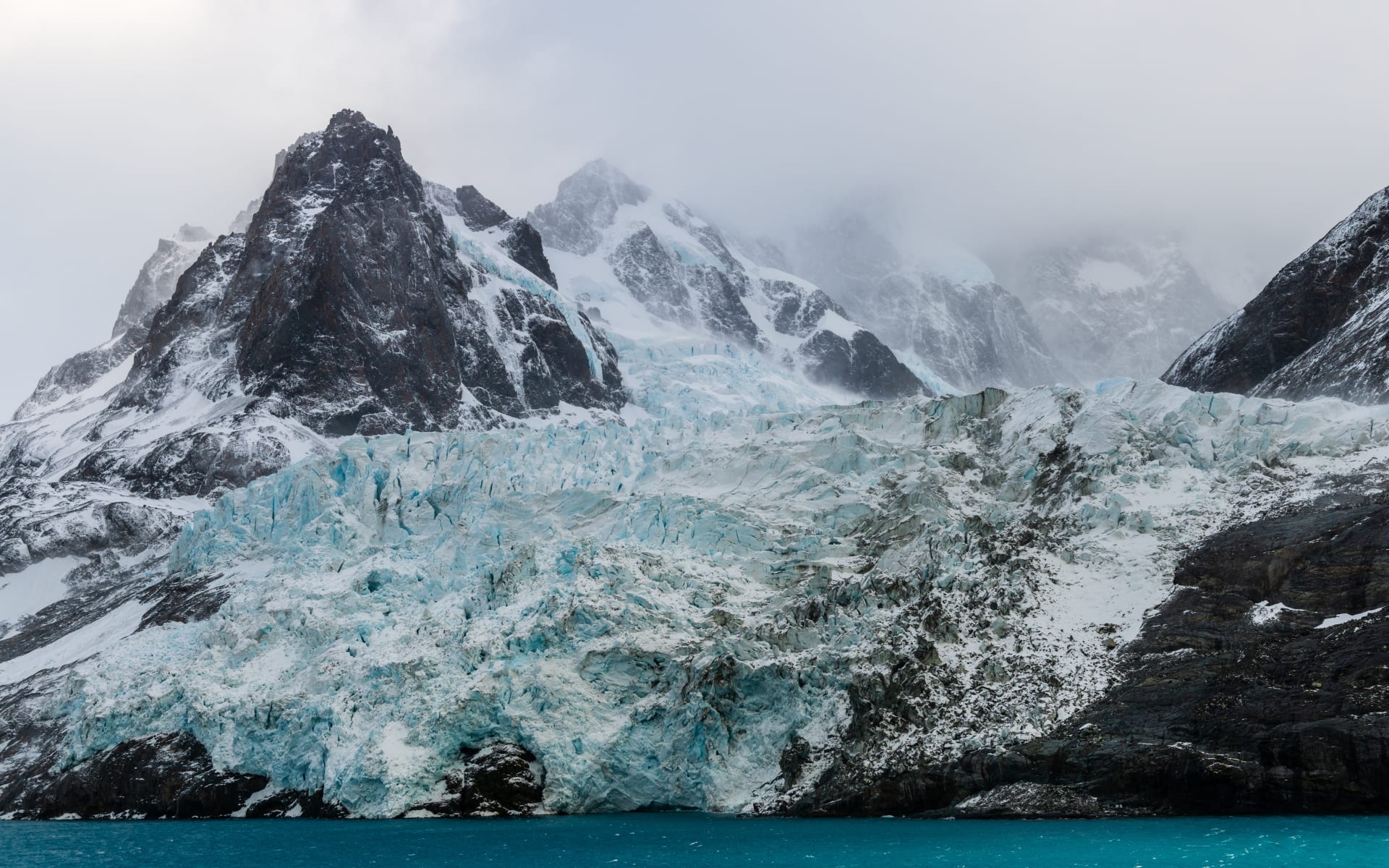
Day 11 - Exploring South Georgia
South Georgia includes a collection of smaller islands and islets that surround the main island, and you can take boat trips to these wildlife havens.
Visit Right Whale Bay in the northwest of the island to see elephant seals, king penguins and thousands of fur seals in February. Head to Salisbury Plain for incredible penguin and seal populations, including a giant king penguin rookery and Cooper Bay for macaroni penguin colonies.
Prion Island is home to the wandering albatross, and a boardwalk has been built for easier access and to protect the vegetation. Drygalski Fjord is a steep-walled fjord with stunning scenery and a small rookery of Weddell seals, normally only found in Antarctica.
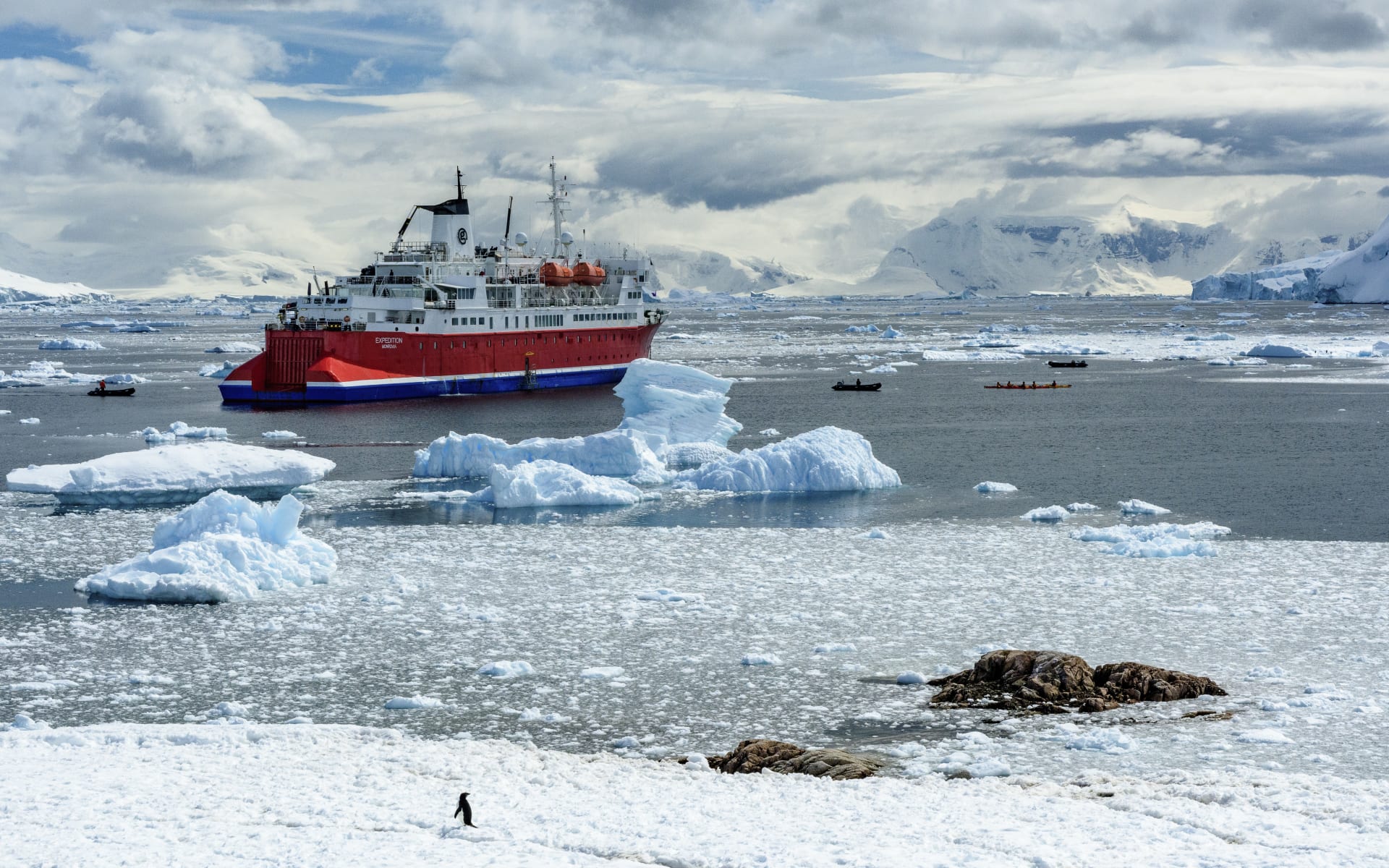
Days 12-13: Scotia Sea
Day 12 - Sailing the Scotia Sea
Begin your journey through the Scotia Sea en route to Tierra de O'Higgins Península (the Antarctic Peninsula). You’ll be retracing the route of Shackleton’s great Imperial Trans-Antarctic Expedition in reverse as you sail towards Elephant Island and the Antarctic Peninsula. The expedition, lasting from 1914 - 1917, was the last major expedition of the Heroic Age of Antarctic Exploration and aimed to make the first land crossing of the Antarctic continent. The expedition failed to reach this goal; however, it has been remembered as an incredible feat of endurance.
The crew of the aptly named Endurance were forced to camp on the ice for months during the Antarctic winter after their ship sunk in the Weddell Sea. They used lifeboats to reach Elephant Island, and then Shackleton and five others made an open-boat journey across 1,300 kilometres to reach South Georgia and arrange a rescue party. Everyone survived. You’ll be immersed in this epic history as you sail through the Scotia Sea on your own intrepid expedition.
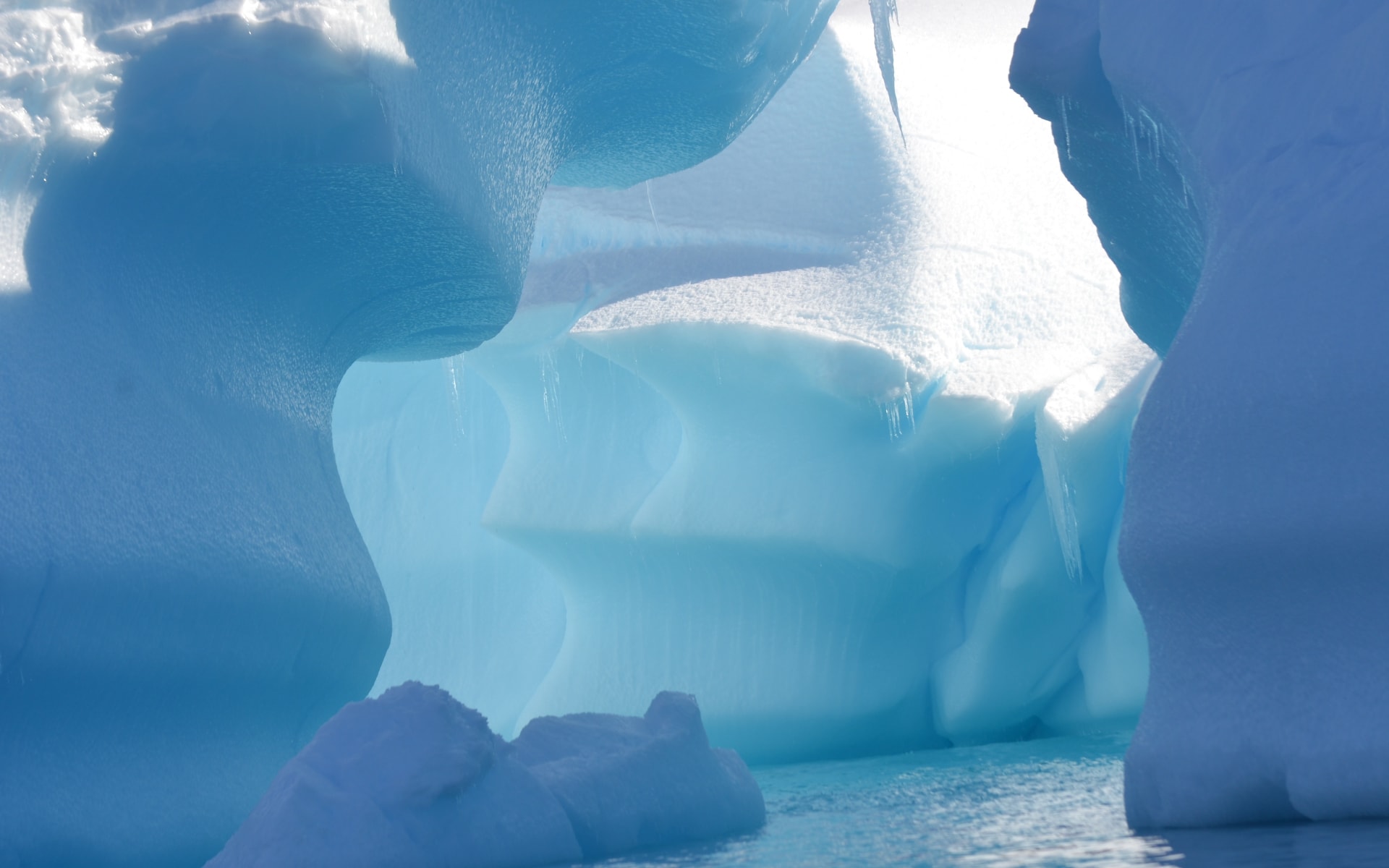
Day 13 - Sailing the Scotia Sea
This is your second and final day of sailing before reaching the Antarctic Peninsula. Learn more about the nature and history of this region with daily presentations in the Discovery Lounge. The lectures generally kick off in the evening with happy hour, and you’ll also get a preview of the next day’s activities during this time.
You’ll then head to dinner, and later at night, there’s often live music entertainment at the Polar Bear Pub. The sun rarely sets here, so you can spend hours on the observation decks soaking up the ethereal atmosphere.
As you glide closer to the continent, you’ll begin to see a sprinkling of floating icebergs in the ocean. The brilliant white of the icy sculptures contrasted with the dark, swelling ocean is a beautiful sight to behold.
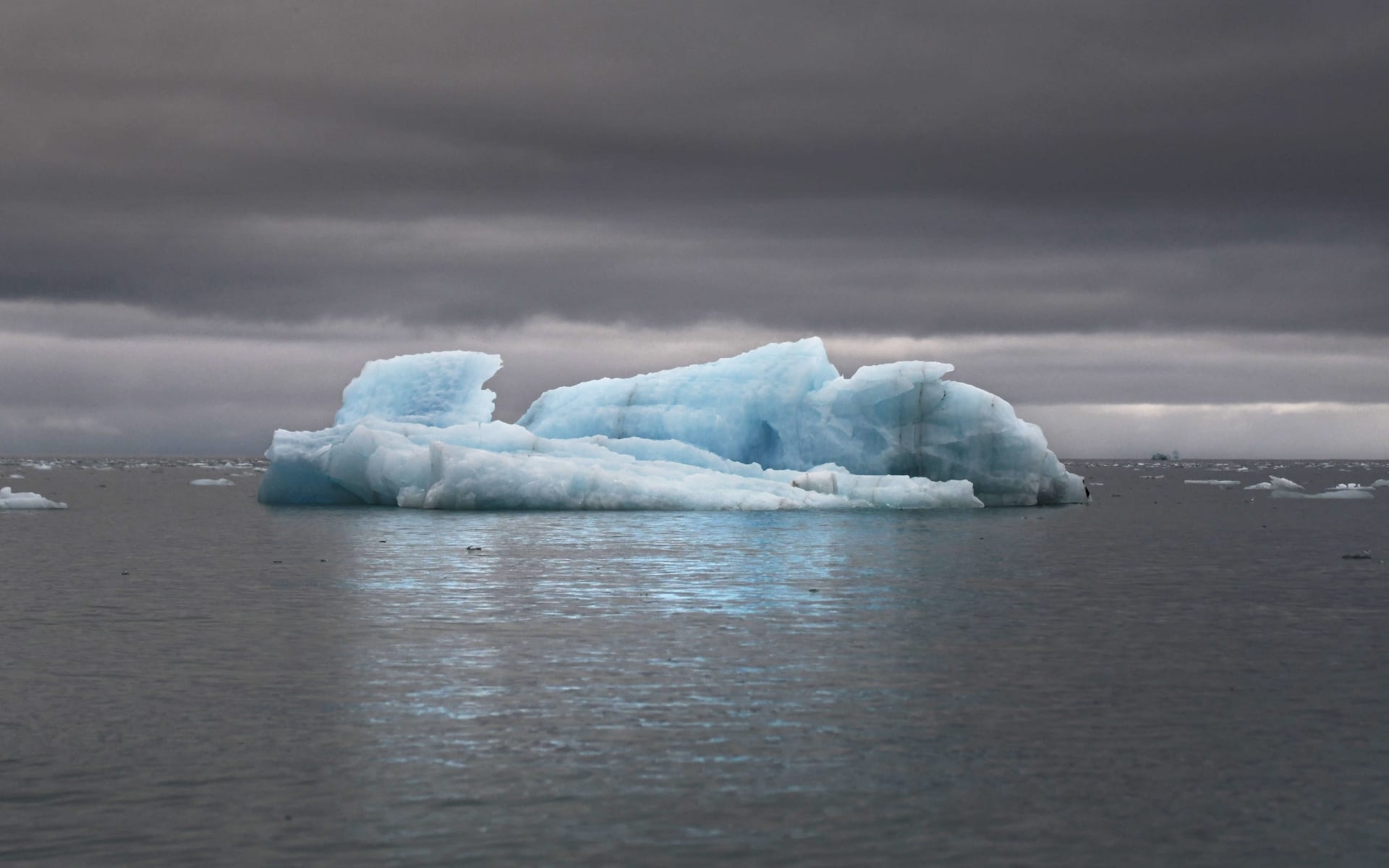
Days 14-18: Antarctic Peninsula
Day 14 - Exploring the Antarctic Peninsula
Today you’ll set foot on the Antarctic continent for the first time.
You’re now in the midst of one of the most awe-inspiring places in the world. This is pure wilderness, an indomitable land of bewitching icebergs, churning seas and sparkling sea ice strewn with some of the most unique wildlife on Earth.
It’s a momentous occasion, but don’t worry if you don’t spot everything on your first excursion. You’ll have five days here and will attempt two shore landings per day, depending on the wild and unpredictable weather.
The sheer power of the landscape is quite moving, and you may often find yourself left speechless. As you are held to the whims of the winds and currents, you’ll forge an intimate appreciation of mighty Mother Nature.
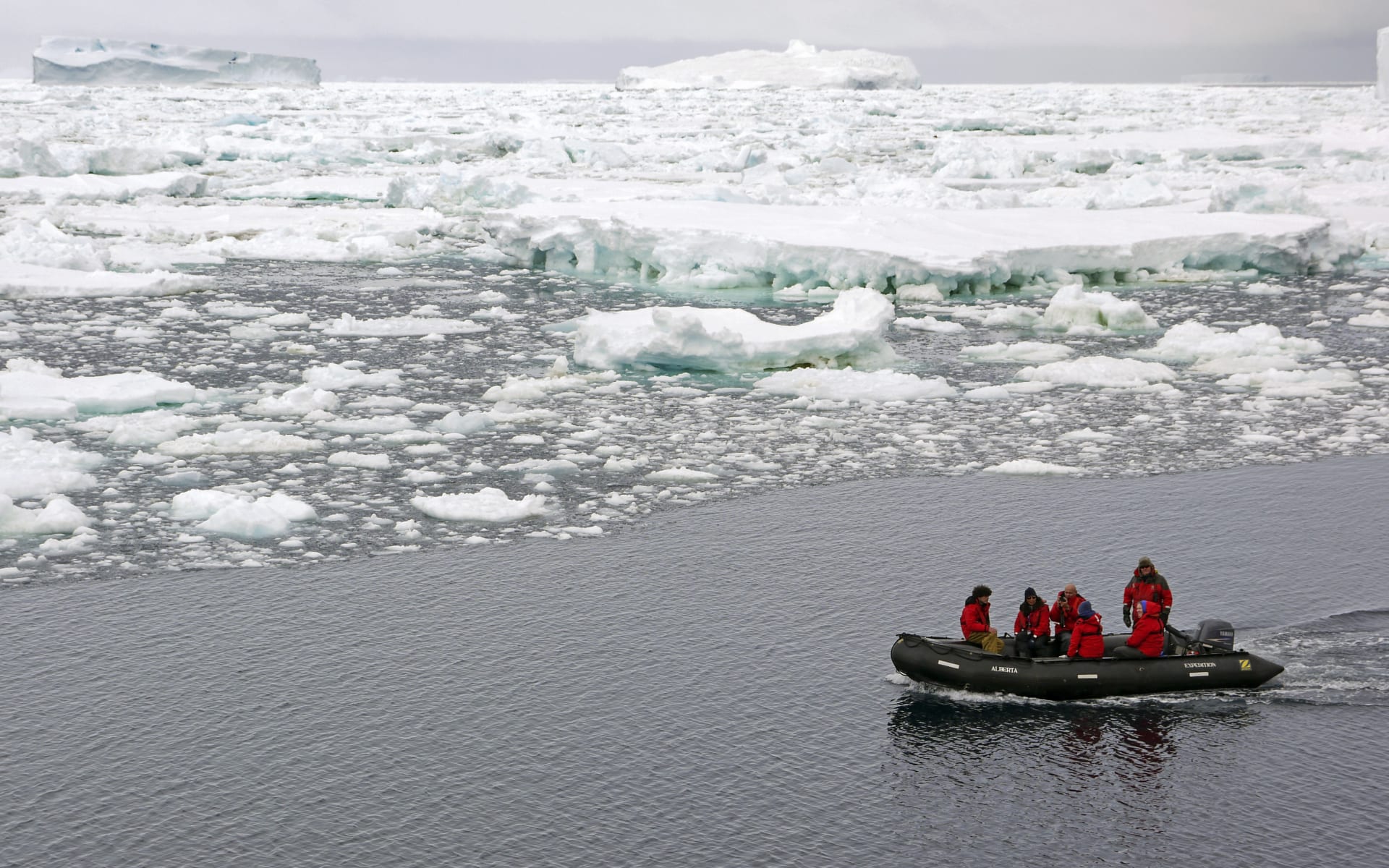
Day 15 - Exploring the Antarctic Peninsula
No two days in the Antarctic are the same; however, a typical day starts around 7:30 am with breakfast, followed by a morning excursion into the Antarctic Peninsula and the South Shetland Islands. You’ll return for lunch before heading out on another excursion, if possible. You’ll head back for happy hour and a presentation in the Discovery Lounge, then dinner and entertainment in the evening.
Your shore excursions are arranged using a Zodiac, a large-capacity, rigid-hulled, inflatable boat with 4-stroke diesel engines. You’ll be provided with complimentary Wellington boots, and pull-on waterproof boots that are essential for landings. You’ll also need to wear warm, waterproof clothing, a hat and gloves, and we recommend taking binoculars, a camera and a waterproof bag.
The heated Mud Room on the ship is there for you to store your wet clothes after shore excursions, so you’ll have more space in your cabin and cosy, dry clothing for your next landing.

Day 16 - Exploring the Antarctic Peninsula
The Antarctic Peninsula and the South Shetland Islands are home to a plethora of unique wildlife. You can visit scientists working in modern research bases, soak up the majestic glaciers and snow-capped mountains, and observe some phenomenal species breathing life into the harsh environment.
The Peninsula becomes a breeding ground for hundreds of bird species in the summer, including petrels and skuas. You’ll spot Gentoo, Chinstrap and Adélie penguin rookeries, and you may even be able to spot the iconic Emperor Penguin, which is found in the sub-Antarctic islands.
There are large herds of Weddell, fur, leopard and crabeater seals, and you should keep your eyes peeled for orca, humpback, and minke whales migrating through the cold waters. Vegetation enthusiasts will be fascinated by the abundance of lichen and mosses, and you can also spot the endemic Antarctic Hairgrass and Antarctic Pearlwort.
With around 98% of continental Antarctica covered in ice up to 4.7 kilometres thick, freezing temperatures, extreme dryness, and high solar radiation, any organisms that survive here are classed as extremophiles.
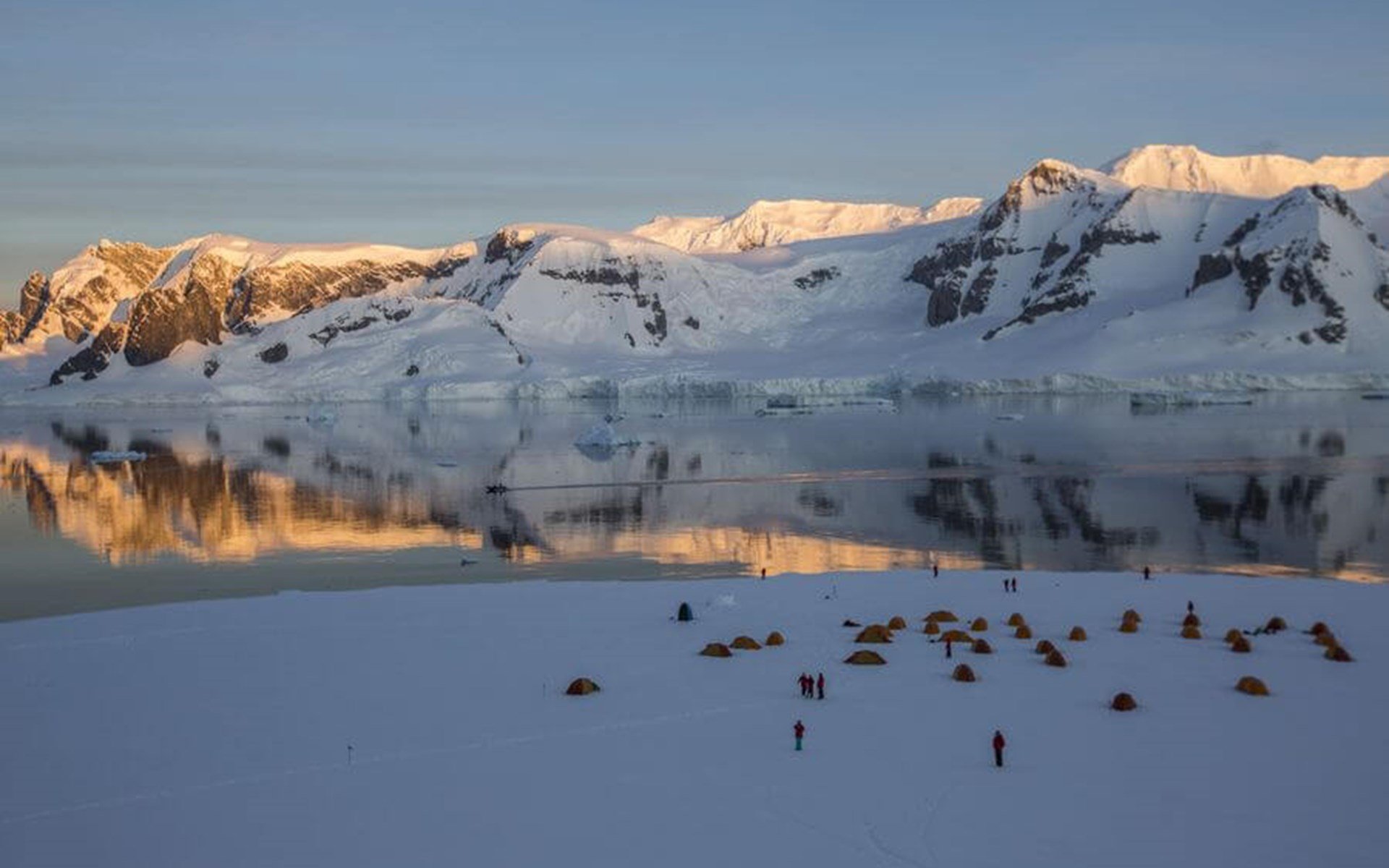
Day 17 - Exploring the Antarctic Peninsula
Weather permitting, you’ll have the additional option to go camping or kayaking on your Antarctic voyage.
The Antarctica camping experience is a truly humbling encounter with nature. Follow in the footsteps of the first explorers as you spend a night ashore, wrapped in fresh sea air and a magical canopy of stars. You’ll have the opportunity for some brilliant photography and will fall asleep to the sounds of the buckling ice and the swelling ocean.
You can get even closer to this astounding environment with a kayaking trip into the remotest corners of the Peninsula. As you glide along the icy waters in the shadows of towering icebergs, you’ll be mesmerised by the unparalleled beauty of Antarctica.
All onshore activities are run by highly experienced and skilled guides, so you’ll enjoy these adventures in safe, expert hands.
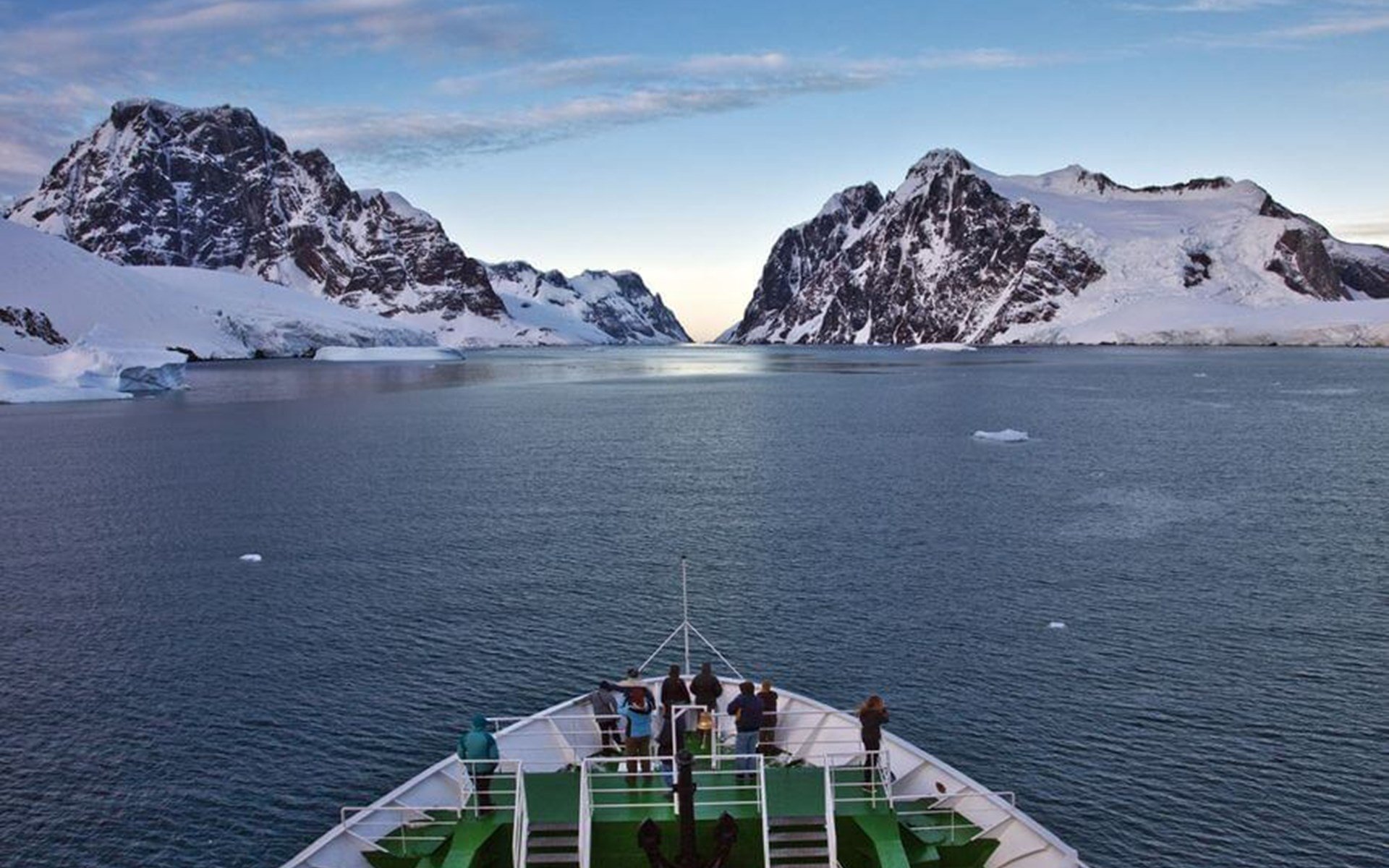
Day 18 - Exploring the Antarctic Peninsula
Antarctica is one of the most untainted places in the world, yet you’ll still find human activity, from old explorer camps and abandoned whaling stations, to research stations and military bases of today.
Many courageous adventurers attempted to explore this final frontier. However, the first discoveries are largely disputed. The first sighting was likely by an American sealer named Nathaniel B. Palmer or by the Russian Imperial Navy in 1820. The first landing is believed to be by a 19th-century sealer, John Davis, and then by the Swedish Antarctic Expedition in 1920.
You can see a number of historical sites around the Peninsula, including Nordenskjöld Hut, the Antarctic Peninsula’s oldest remaining building. This protected historic site was the black-walled hut of the Swedish South Polar Expedition. You can also visit Palmer Station, built in 1968, to honour the sealer’s first sighting. There’s an Adélie rookery nearby the station on Torgersen Island.
Another unmissable site is Lemaire Channel, a stunning steep-sided channel between Booth Island and the Peninsula. First navigated by Belgian explorers in 1898, the channel is so photogenic that it’s known as the ‘Kodak Gap’.
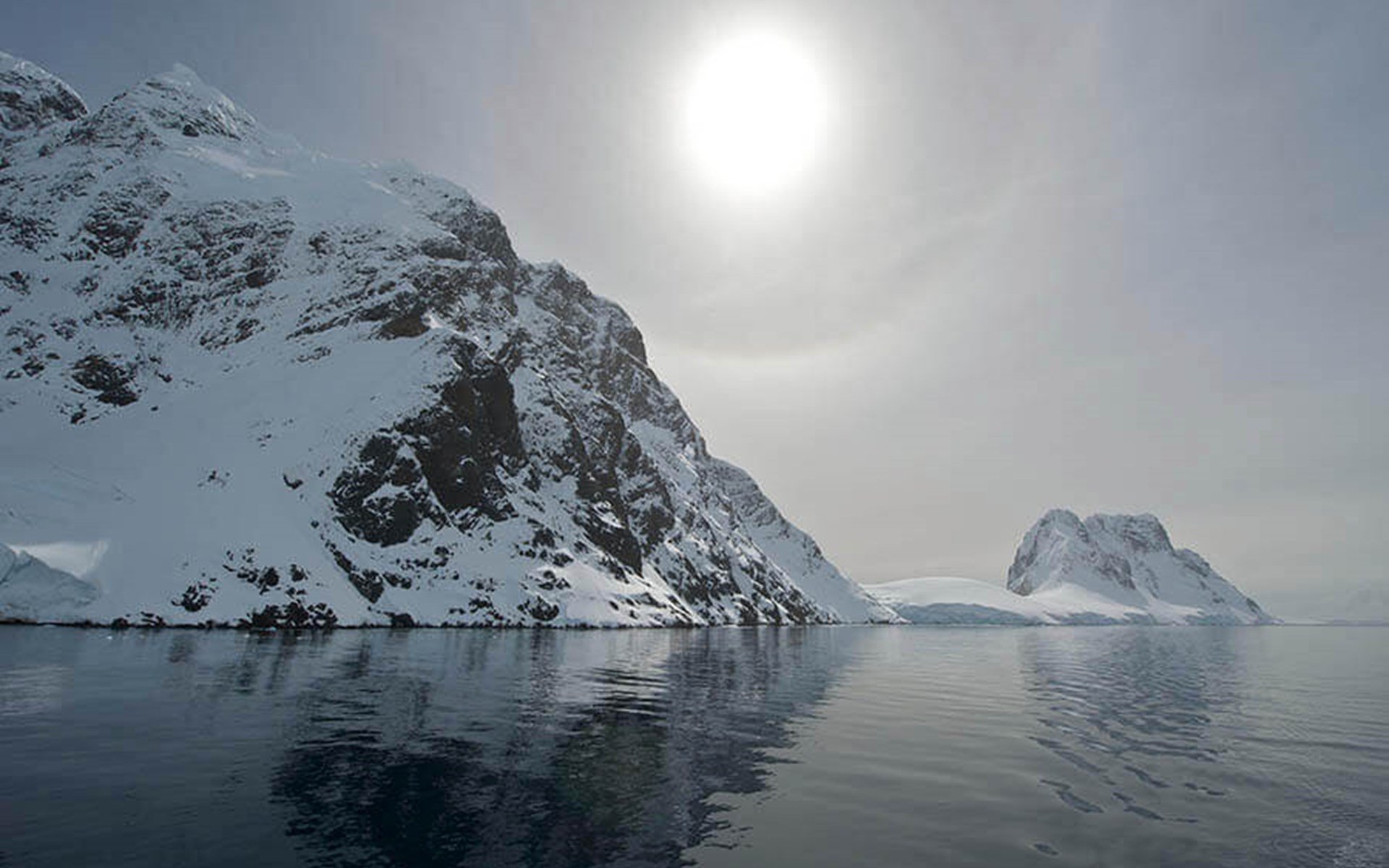
DAY 19-20: Drake Passage
Day 19 - Sailing the Drake Passage
Soak up the supernatural landscapes of the Antarctic Peninsula one last time as the G Expedition departs from the seventh continent en route for Ushuaia. The path back to Argentina takes you through the Drake Passage, a notorious body of water known as the ‘Drake Shake’.
The passage is around 1000 kilometres wide, with an average depth of 3,400 metres. It experiences strong winds and impressive swells of two to thirteen metres and is part of the Antarctic Circumpolar Current, the world’s most voluminous current. Water flows through the passage at an estimated rate of 95 ad 150 million cubic metres per second, about 600 times the flow of the Amazon River.
All of these factors combined have landed the Drake Passage with a reputation for being one of the roughest seas in the world. However, with today’s modern ships and advanced satellite and weather monitoring technologies, thousands of travellers make it safely through the Drake Passage every year, albeit with a few green faces.

Day 20 - Sailing the Drake Passage
Today is the last day of the unforgettable journey through the Drake Passage. This rocky rite of passage is best experienced on the observation decks, where you’ll have a final chance to spot some of the Antarctic’s incredible wildlife, including whales roaming through the waters.
You can also see numerous sea birds, including skua, albatross and the Antarctic petrel, a brown and white bird that likes to fly alongside ships.
Enjoy some final lectures in the Discovery Lounge, where you can have any last questions answered. It’s also a good opportunity to gather for a final meal in the Albatross Dining Room or a drink in the Polar Bear Pub.
If you’re prone to motion sickness, visit your doctor before your trip to discuss the best sea sickness medication for you. Stay hydrated, eat light, regular meals, keep active, and get some fresh air. There’s always a doctor on board if you need further help. Otherwise, enjoy the ride!
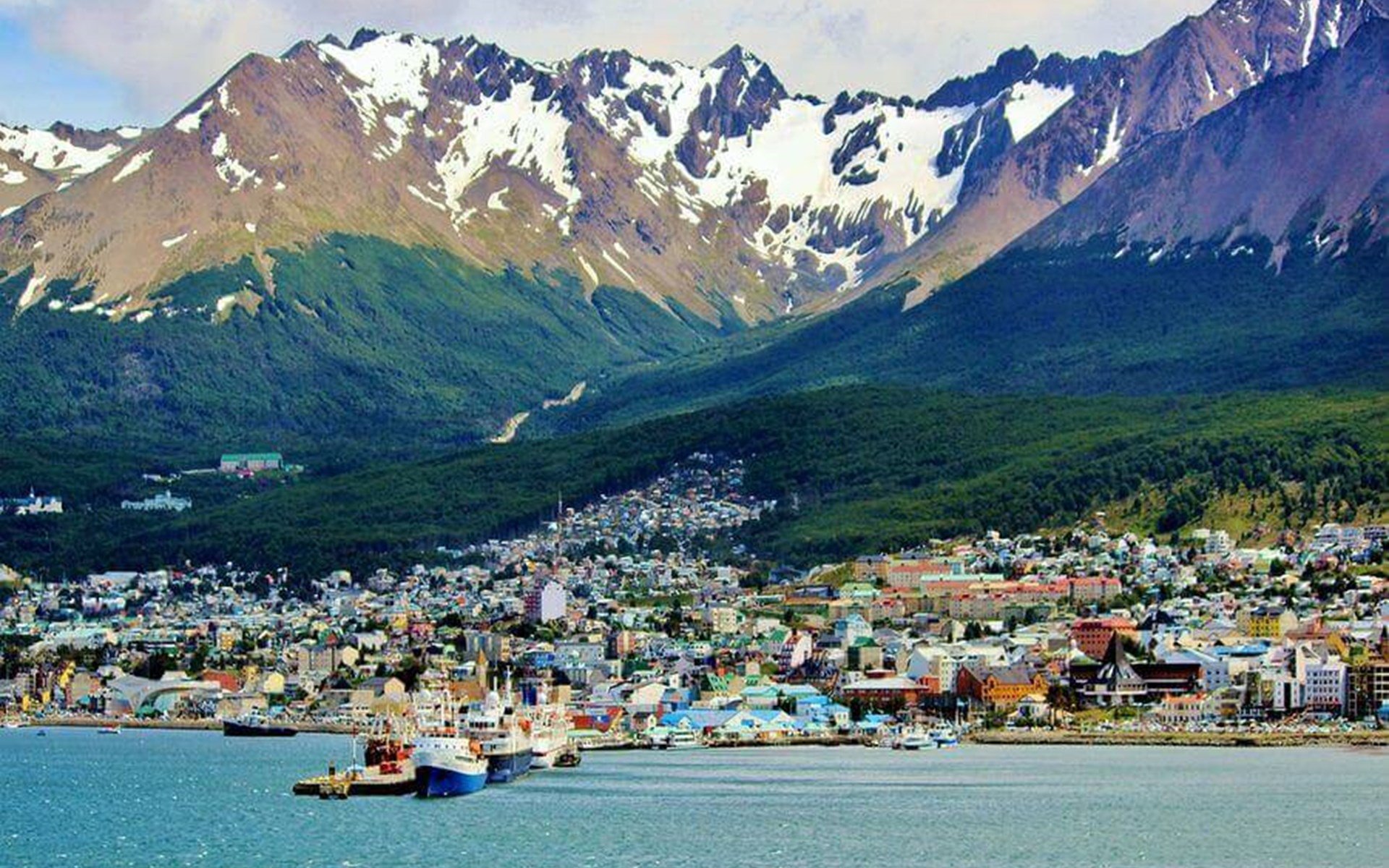
DAY 21: Ushuaia
Day 21 - Departure from Ushuaia
This morning you’ll enjoy a final breakfast before disembarking in Ushuaia. As you return to the mainland, you’ll say farewell to the incredible ship crew and fellow travellers who have shared this spectacular journey with you.
After three phenomenal weeks of exploring one of the world’s most untouched corners, you’ll be returning with memories, stories and photographs of a place that few others have seen. Antarctica has a way of touching all those who reach its shores, and we’re sure you’ll return to Ushuaia with an even bigger itch for intrepid adventure.
Our friendly team of Luxury Travel Specialists can help you arrange onward travel through Argentina and beyond. You may like to explore neighbouring Chile, visit the vibrant cities of Colombia, or simply relax on the sunny beaches of Cuba after your whirlwind adventure.
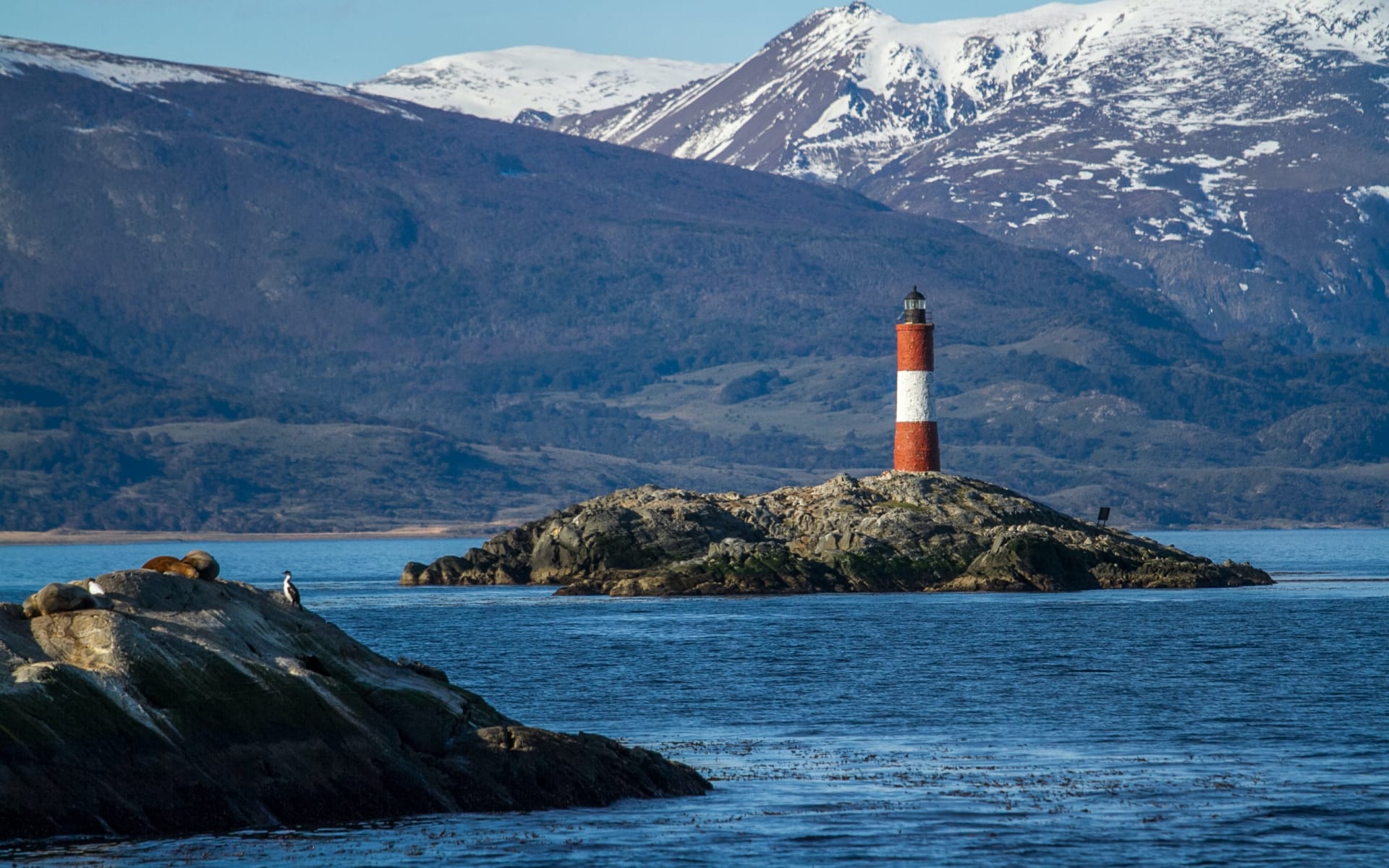
Interested in this trip?
Call us on +44 117 313 3300 to start planning your perfect holiday
Enquire OnlineWhy Wayfairer
The preservation of Antarctica’s uniquely pristine environment is a top priority of this marine voyage, and the crew aim to minimise the negative impact of tourism and spread an understanding and appreciation of the region.
The expert crew are well-trained to operate the expedition in a socially and environmentally responsible manner, and all travellers are thoroughly briefed on these practices before participating in excursions. They are also supervised at all times.
The G Expedition ship exceeds all environmental regulations and protocols in the regions visited. All operations adhere to the rules and regulations of the International Association of Antarctic Operators (IAATO), and they also advocate and promote environmentally responsible travel in Antarctica.
For excursions ashore, you’ll travel in Zodiacs using 4-stroke outboard engines, which greatly reduce environmental pollutants and produce less noise pollution. At the end of each voyage, the Captain’s Sea Chart is auctioned, and all proceeds are donated through Planeterra, a non-profit organisation that supports local and international charities and community projects around the world.
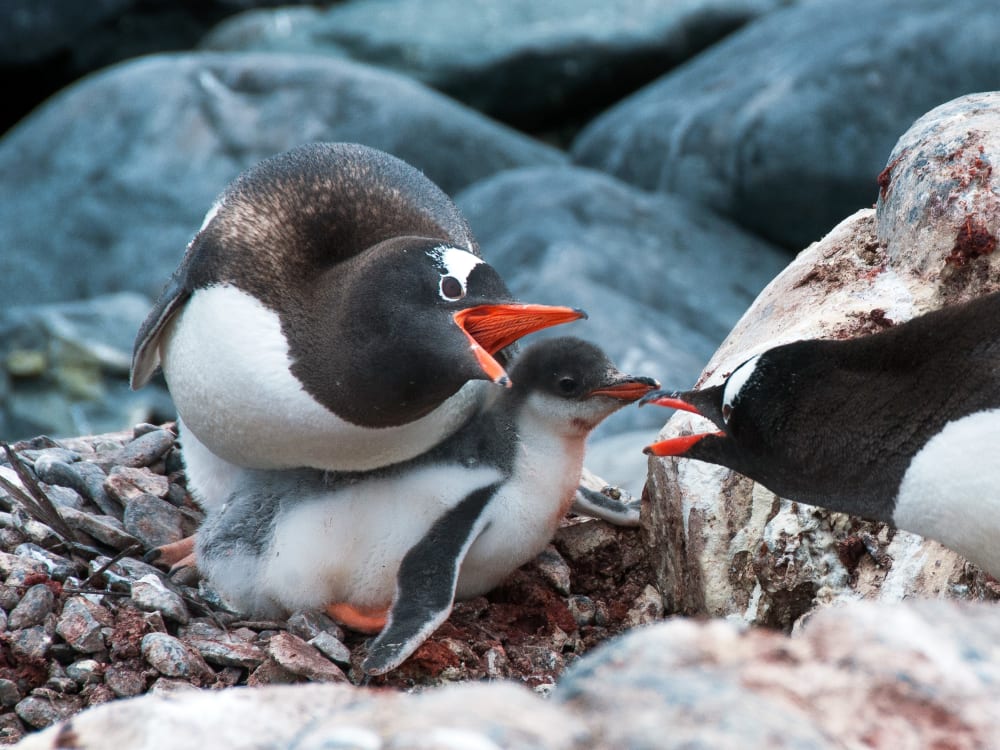
More Antarctica Travel inspiration from Wayfairer customers and travel specialists
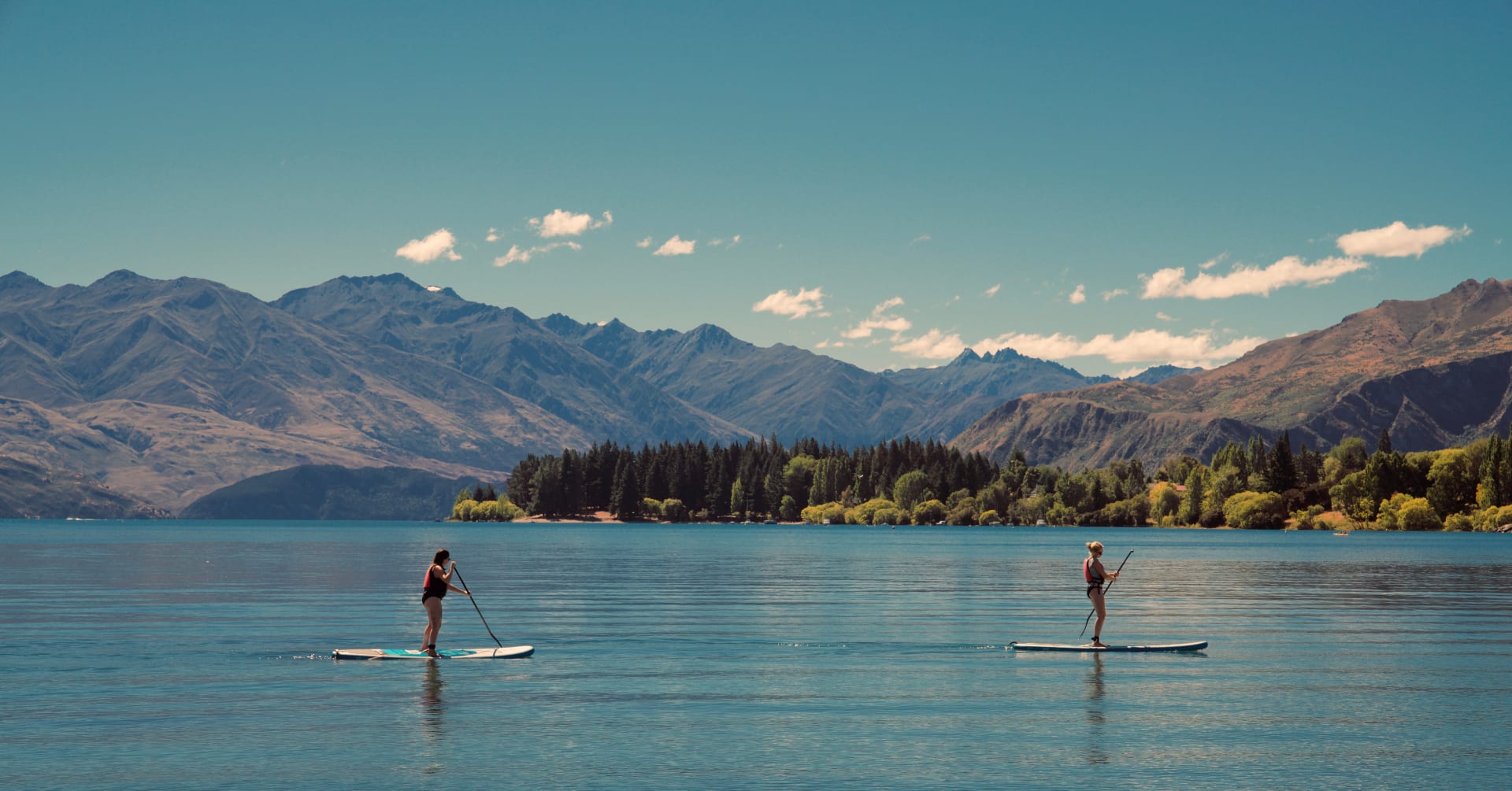
6 Winter Adventure Holidays in the Sun
By Jade Braham
November, 14, 2023

7 Best Places to Visit in November 2023
By Lucinda Elwood
November, 5, 2023
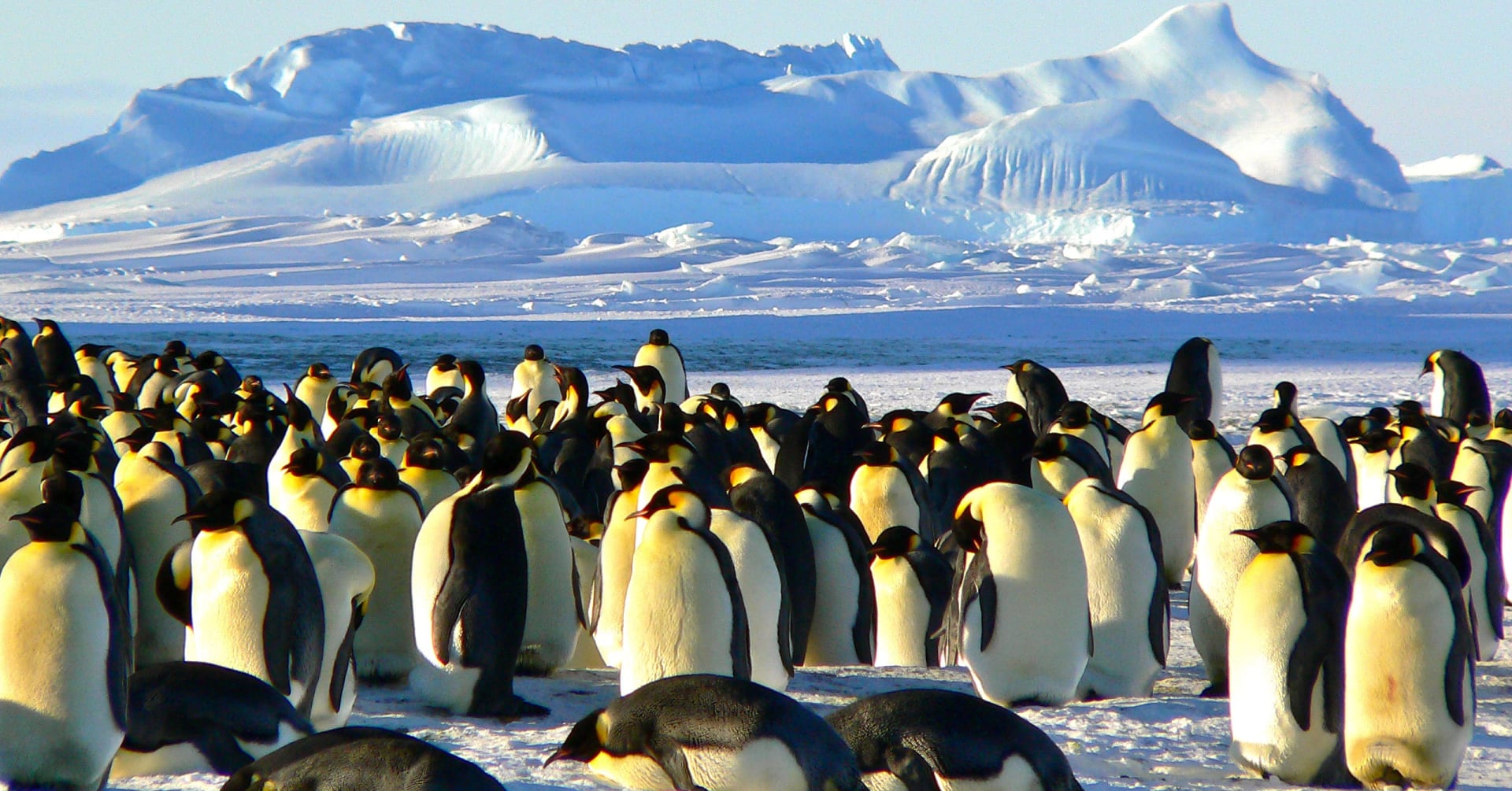
Responsible Travel Guide: Antarctica
By Wayfairer Team
July, 28, 2023
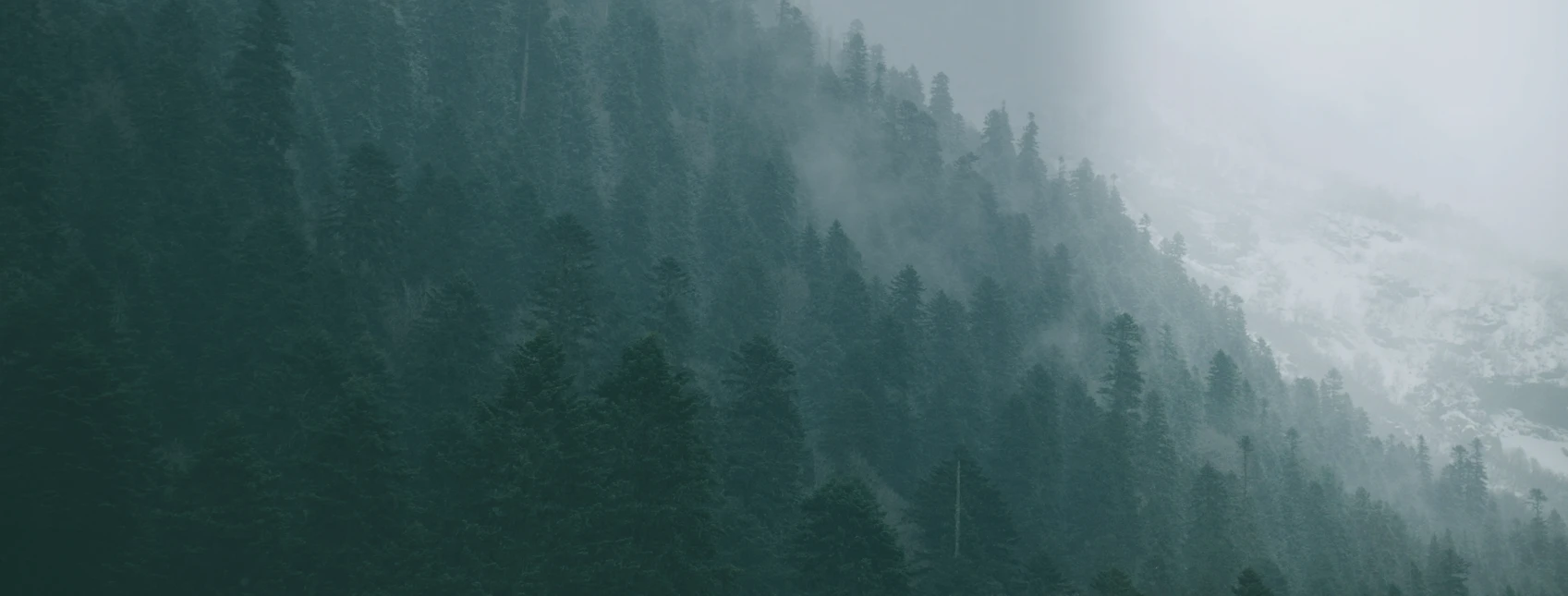
Sign up to our newsletter
For more travel inspiration delivered straight to your inbox just fill in your details here



